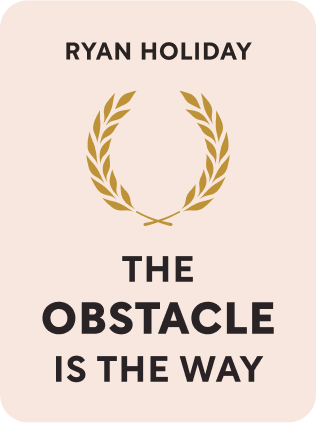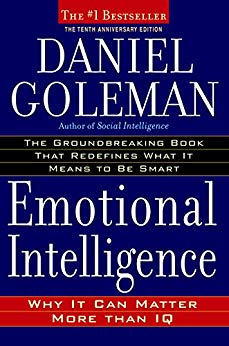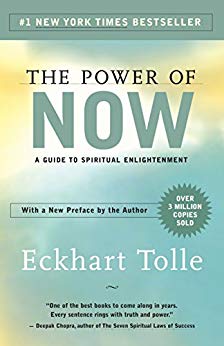

This article gives you a glimpse of what you can learn with Shortform. Shortform has the world’s best guides to 1000+ nonfiction books, plus other resources to help you accelerate your learning.
Want to learn faster and get smarter? Sign up for a free trial here .
Do you tend to bury or dwell on difficult emotions, struggling to let them go? What are the dangers of repressing your emotions?
Unpleasant and difficult emotions are an inevitable part of life. If you don’t learn how to process emotions in a healthy way, you’ll struggle with maintaining healthy relationships, keeping up with your work duties, and even being able to relax and have fun.
Keep reading to learn about ways to process your emotions and let them go.
Your Emotions Shape Your Behavior
You have emotional responses to almost everything you experience in your day-to-day life. Though many of your responses may seem minor, they’re important because your emotional reactions develop into patterns of behavior. Therefore, knowing how to process emotions in a healthy way is the key to becoming an adaptable, well-adjusted, and resilient individual.
Separating From Your Emotional Pain Body
As unprocessed emotions accumulate throughout your life, they add to the emotional baggage that weighs you down and prevents you from finding inner peace. Spiritual teacher Eckhart Tolle refers to it as the emotional “pain-body,” which starts with painful experiences from childhood, and every experience that brings you emotional pain is added to the collection.
The pain-body feeds on the negative energy that is created when you get swept up in the emotions it produces and identify with the pain-body. Events, conversations, and thoughts can trigger the pain-body, especially if it hits a nerve with a familiar pain pattern from the past. When your pain-body is triggered, it can cause you to be irritated, impatient, somber, angry, depressed, or antagonistic.
Say your pain-body includes many experiences of feeling like you could never live up to your older brother’s achievements. So when your parents tell you about the new house your brother just bought, it is likely to trigger your pain-body. In response, you might feel angry, defensive, or inferior.
When the pain-body is in control, you become a victim or a perpetrator, either inflicting pain on others or yourself. This feeds negative energy back into the pain-body and strengthens its power, creating a vicious cycle.
To free yourself from carrying the pain and being consumed in the negative energy it creates, you need to stop identifying with your pain body. Because the pain body is a product of ego, the way to disidentify from it is to separate your true self from the ego is by observing it and resisting engaging with the thoughts, emotions, and negative energy the emotional pain-body creates.
Separating yourself can be very difficult because the pain-body accumulates so much negative energy that it creates a powerful force of negative thoughts and emotions. You have to focus deliberately on observing these without getting sucked in.
When you observe your pain-body—even if it’s just for a moment, before the negative energy pulls you back in—you can see that there is a part of you that is not consumed by your pain-body, that is merely witnessing it. What’s more, with time and practice you begin to learn your pain-body’s tricks and tendencies. The more you do this, the more power you have to stop identifying with the pain-body and break its power over you.
When you’re worked up and angry because someone just insulted you, try to stop for a moment and take a step back. If you can pull yourself away from embodying that anger, you can observe the situation almost as a third party: “She just said that I’m lazy, and it was really offensive. I got upset because I am absolutely not lazy, and in fact I work incredibly hard.
On a deeper level, it’s very important to me that people recognize me as a hard-working person, and she hit a nerve by saying the opposite. The reality is that whether she—or anyone else—acknowledges it or not makes no difference in the work I put forth. (Furthermore, it might be worth examining why it’s so important to me that people recognize me as a hard-working person.)”)
As you observe your pain-body, do not judge: Don’t call it bad or good. Don’t blame yourself for feeling that way or succumbing to the pain-body’s power. Don’t blame others for triggering it. Just observe it.
- St. Paul said, “Everything is shown up by being exposed to the light, and whatever is exposed to the light itself becomes the light.” Your presence and awareness are the light that exposes the pain-body.
Notice how you may be attached to your pain-body by wanting to talk about it or think about it. This is a way of creating more negative energy, and is likely a habit you formed from years of identifying with it.
Clearing Your Heart Blockages
Michael Alan Singer proposes a somewhat similar approach to dealing with unprocessed emotions. In his book The Untethered Soul, he explains that unresolved emotions from your past create Samskaras or blockages in your heart chakra.
When a blockage happens—such as when you resist the pain of a broken relationship—you initially try to process it through your mind, and when that doesn’t work, it gets transferred to your heart, where it generates emotions. When you then resist it in your heart, your heart puts it in deep storage, where it becomes a Samskara, an “impression” from the past that runs your life. A stored Samskara becomes a trigger point that makes your heart open or close spontaneously in response to life experiences. A buildup of such blocks affects your entire life.
You don’t have to live at the mercy of unprocessed emotions and Samskaras. Singer gives the following advice on how to process emotions and let go of the old, stored energies when they are triggered:
- First, notice your energy flow starting to tighten into jealousy, anger, or whatever it is.
- Second, relax and remember yourself as the self, the objective witness of experiences.
- Third, use the opportunity of the triggered Samskara to release the negative energy through non-reactiveness. Just let it flow through you and out of you without any or resistance. Recognize this as an opportunity for healing.
By learning how to process emotions through non-reactiveness, you can improve your physical health and walk through the world with no problems. Moreover, the stored emotional energy that has been trapped will start flowing out of you to illuminate and energize the people around you.
Redirecting Your Emotional Energy
When you’re unable to fully rid yourself of negative emotions, you can transform them into a form that serves you through sublimation. In particular, when unfair circumstances or pointless constraints frustrate you, you can train yourself to use that anger as fuel instead of allowing it to make you reckless. Use your calm, rational mind to decide where to commit your energy, then allow yourself to act wildly and impulsively within that context.
Final Words
Suppressing or dwelling on difficult emotions can wreak havoc on your psychological well-being. Unresolved emotions can even spiral into serious mental health issues such as anxiety, anger issues, and even depression. Therefore, knowing how to process emotions in a healthy way is an indispensable prerequisite to healthy psychological functioning.
If you enjoyed our article about how to process emotions and let them go, check out the following suggestions for further reading:

Want to fast-track your learning? With Shortform, you’ll gain insights you won't find anywhere else .
Here's what you’ll get when you sign up for Shortform :
- Complicated ideas explained in simple and concise ways
- Smart analysis that connects what you’re reading to other key concepts
- Writing with zero fluff because we know how important your time is











